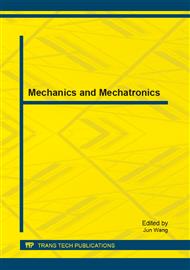p.381
p.388
p.395
p.401
p.407
p.412
p.418
p.423
p.432
The Preparation and Characteristic of PNIPAAm/ Hydrogel Nanocompounds by Radiation Techniqus for Bone Filling Materials and its Cytoxicity
Abstract:
In the paper, high strengthened poly (acrylic acid) NMBA poly (N-isopropylacylamide) (PAA-NMBA-PNIPAAm ) hydrogels were prepared by UV light or γ-ray irradiation method for scaffold material use and application. And the double network (DN) hydrogel can be used as a substitute for nucleus pulposus. The absorption peaks on FTIR show the evidence for the successfulgrafting of PAA-NMBA-PNIPAAm hydrogel material through radiation co-polymerization.The mechanical property assay indicate that the maximum compressive strength of this hydrogel was significantly increased to ~22 MPa when PAA incorporated with both PNIPAAm and NMBA. We also studied the cytoxicity of hydrogels. The results obtained that these composites are more compatible and they they are fitted to appling for biomedical materials.
Info:
Periodical:
Pages:
407-411
Citation:
Online since:
October 2013
Authors:
Keywords:
Price:
Сopyright:
© 2013 Trans Tech Publications Ltd. All Rights Reserved
Share:
Citation:


